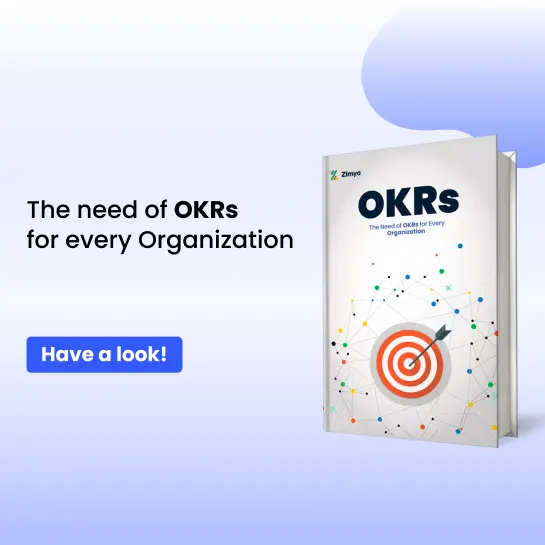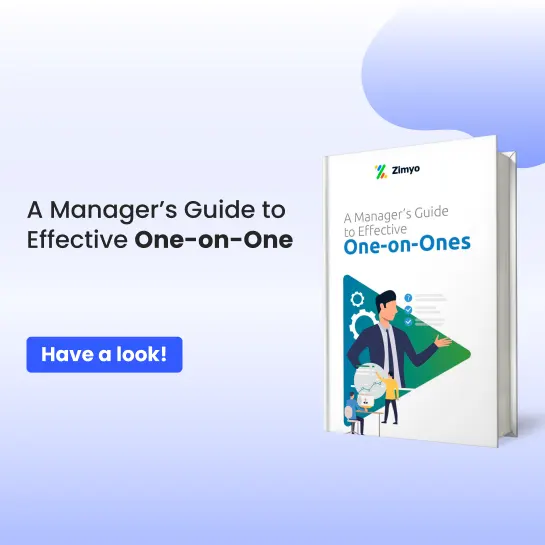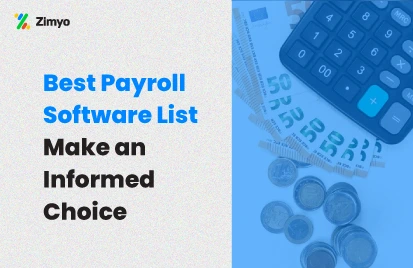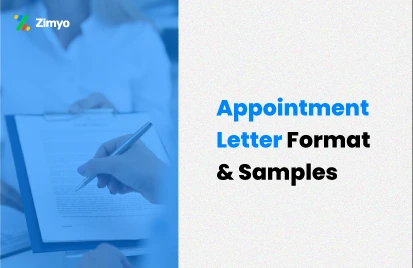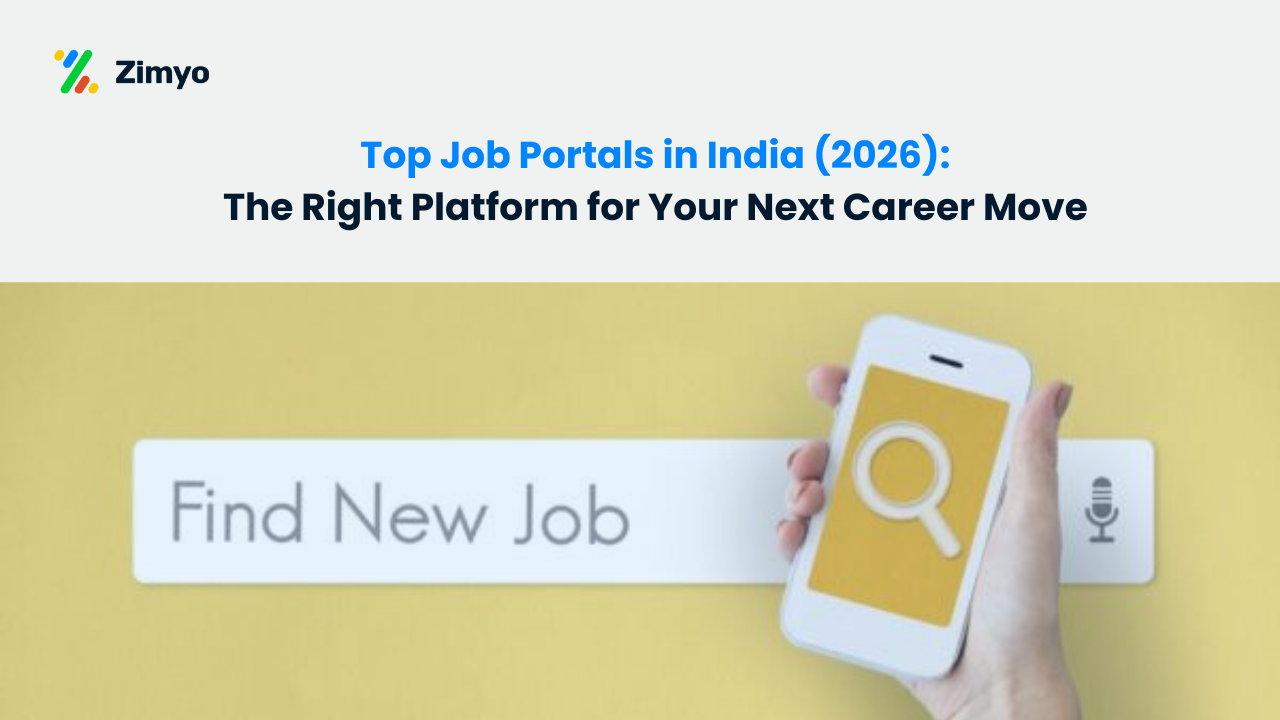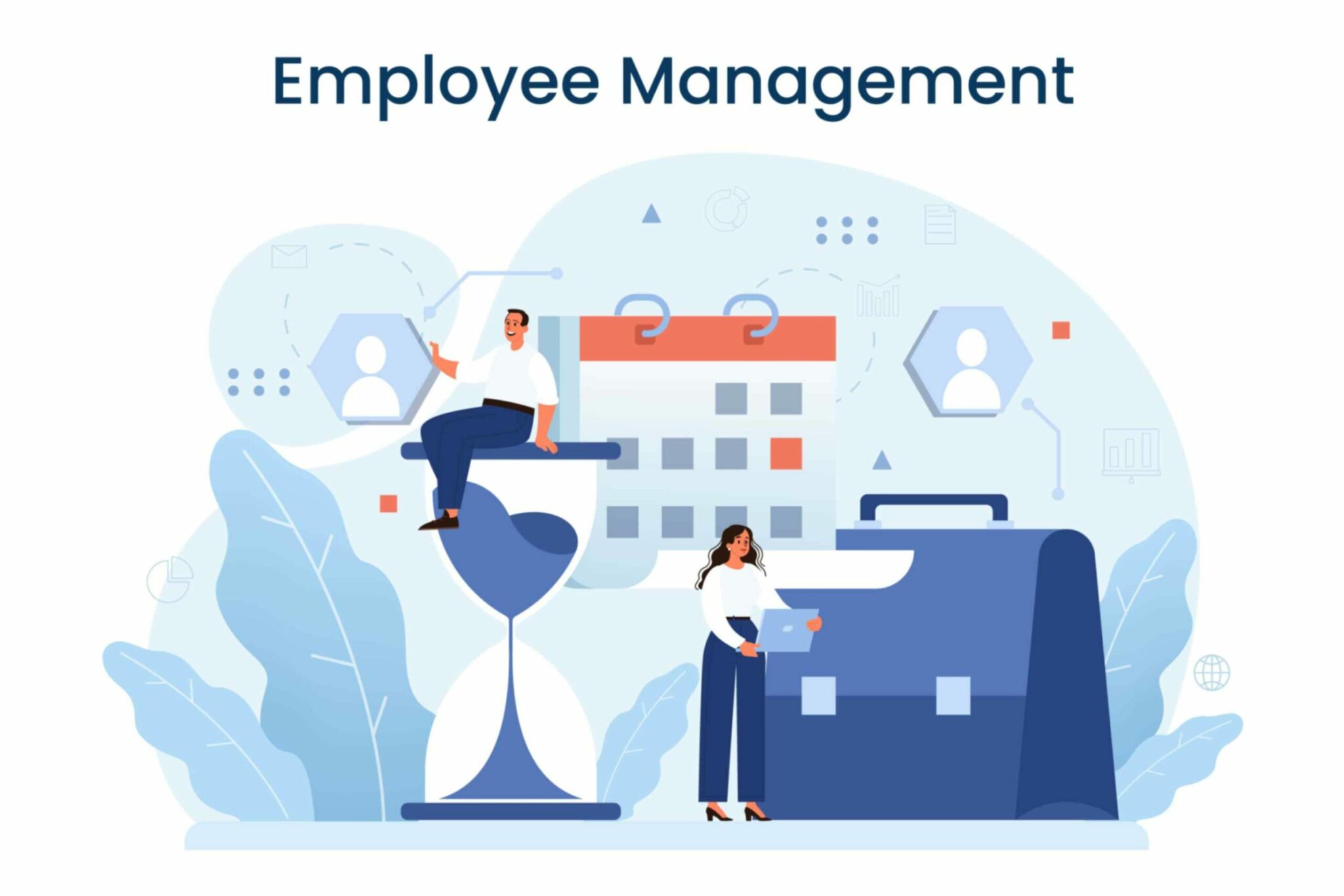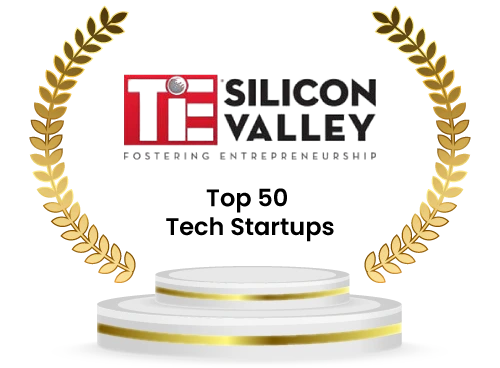You’d agree that recruitment is the backbone of a successful organization. Hiring the right talent at the right time is crucial, it doesn’t matter if you are a startup building your first team or an enterprise scaling rapidly. But here’s the twist, hiring can be messy without ATS, time-consuming, and filled with roadblocks if you don’t know how to manage well. This is where hiring solutions come into play.
Nowadays with the latest hiring software HR teams can automate repetitive tasks. They can speed up recruitment processing and focus more on finding quality candidates. Because organizations are shifting towards applicant tracking systems (ATS), candidate tracking systems, and recruitment outsourcing platforms to simplify and efficient their hiring process.
In our blog, we’ll cover all the things you need to know about hiring solutions. Starting from what they are, the best hiring platforms available, Specifications to consider, how to choose the one, and what are the benefits of using the best recruiting software for your business.
List of the 11 Best Hiring Solutions for Businesses (Ranked by Effectiveness)
Following is the List of the 11 Best Hiring Solutions for Businesses (Ranked by Effectiveness):
- Zimyo
- Lever
- Jobvite
- JazzHR
- BambooHR
- Zoho Recruit
- Bullhorn
- Recruitee
- Comeet
- Loxo
- Pinpoint
Now, let us throw light on each one of these in detail.
Leading Applicant Tracking Systems Comparison
Here’s a skimmable feature matrix of the 11 Best HR Solution for Streamlining the Hiring Process:
Solution | Resume Parsing | AI Candidate Ranking | Onboarding Integration | Recruitment Marketing |
Zimyo | ✅ | ✅ | ✅ | ✅ |
Lever | ✅ | ❌ | ✅ | ✅ |
Jobvite | ✅ | ✅ | ✅ | ✅ |
JazzHR | ✅ | ❌ | ❌ | ❌ |
BambooHR | ❌ | ❌ | ✅ | ❌ |
Zoho Recruit | ✅ | ✅ | ✅ | ✅ |
Bullhorn | ✅ | ❌ | ✅ | ❌ |
Recruitee | ✅ | ❌ | ✅ | ✅ |
Comeet | ✅ | ❌ | ❌ | ❌ |
Loxo | ✅ | ✅ | ✅ | ✅ |
Pinpoint | ✅ | ✅ | ✅ | ✅ |
Best Hiring Solutions for Businesses: Explained in Detail
Here’s a carefully selected list of the best hiring platforms and software that businesses in any industry are employing to find, manage, and onboard top talent.
1. Zimyo
Zimyo is not only HR software but also possesses an ATS system that offers recruitment, employee engagement, performance management, and payroll solutions all-in-one package. For recruitment, Zimyo has a simple-to-use applicant tracking software that makes the entire hiring process easy and efficient.
Its hiring module allows companies to list jobs on various job boards. They can follow candidates at every stage, and coordinate with hiring managers to take informed decisions. What is unique about Zimyo is its emphasis on providing AI-based suggestions, which helps recruiters to find top candidates in a matter of minutes.
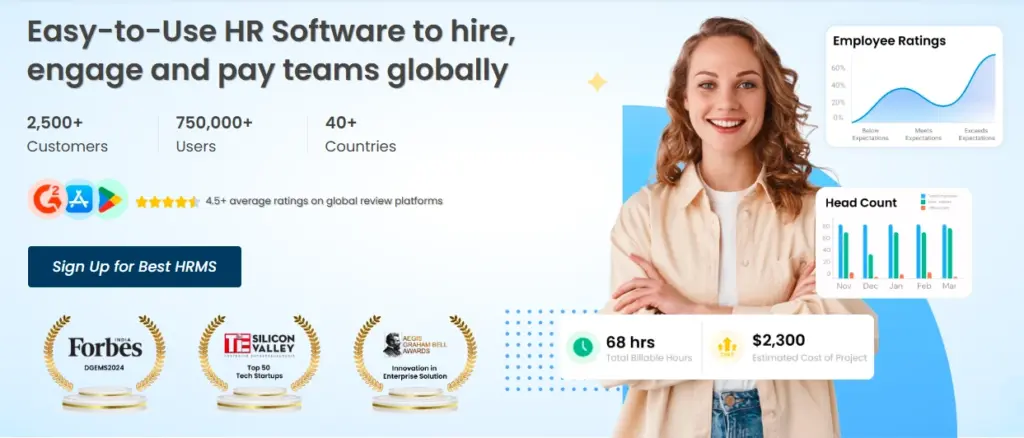
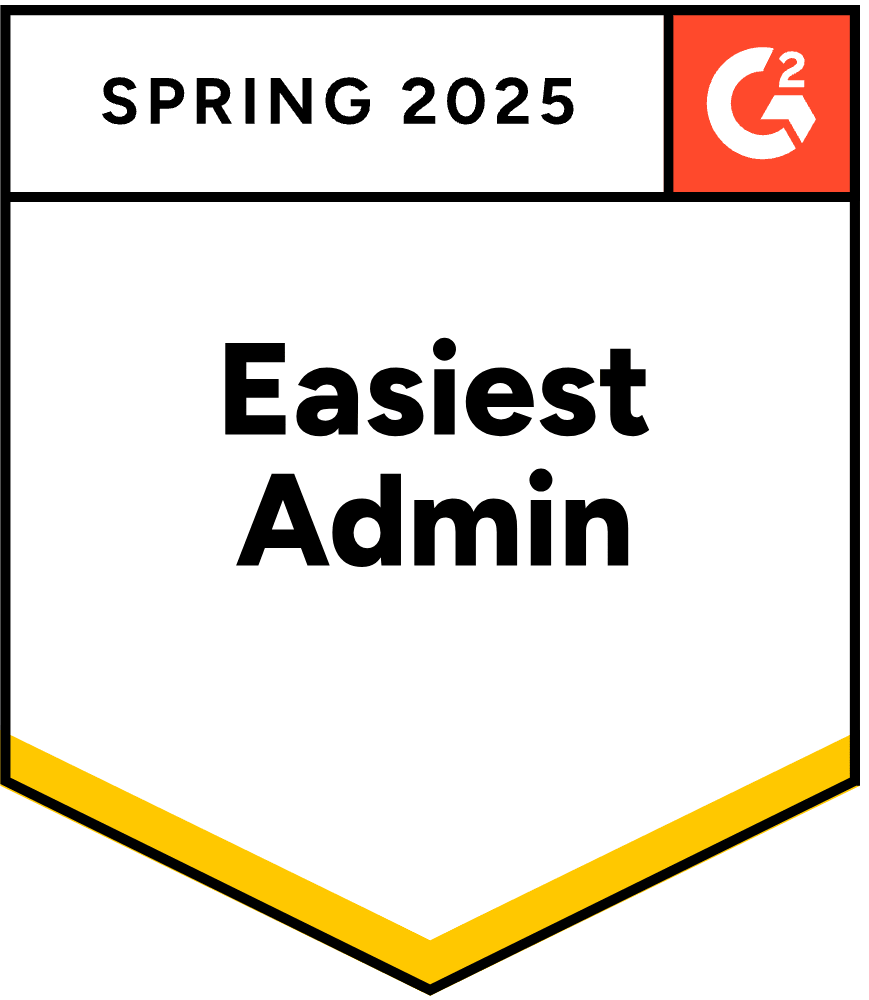
Unique Features:
- Centralized candidate tracking system
- Automated job postings on leading job portals
- Advanced filters to narrow down the correct talent
- Smooth integration with HR payroll and onboarding software
- Simple collaboration between HR and recruiters
Pros and Cons:
Pros | Cons |
End-to-end HR and recruitment solution in one place | Some advanced recruitment features may require customization |
Affordable and scalable for SMEs | Selective third-party integrations |
Great user interface with strong customer support | Limited global recruiting functionalities |
2. Lever
Lever is a popular name in the recruitment technology industry, providing a solution that marries ATS with customer relationship management (CRM) capabilities. This makes it a robust solution for organizations desiring to build long-term relationships with prospective candidates without running active job postings. Lever prioritizes collaboration, enabling recruiters, hiring managers, and leadership to work together seamlessly.
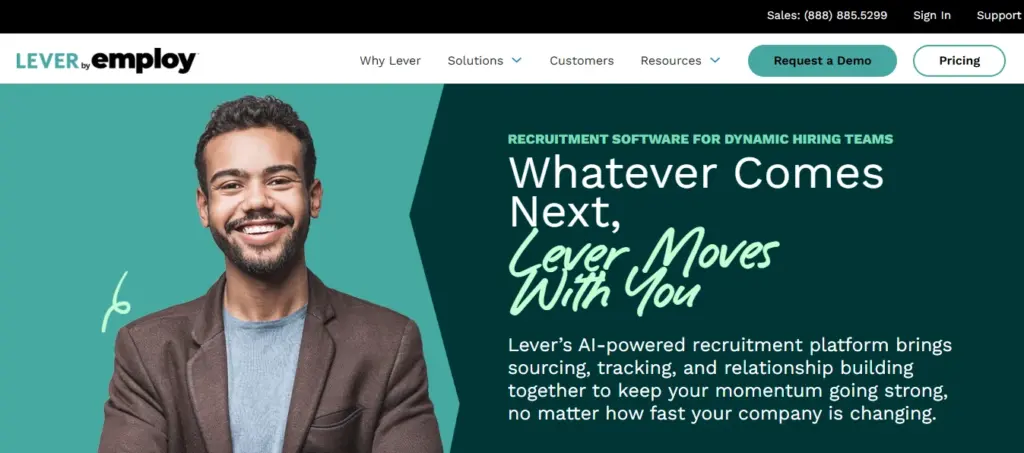
Unique Features:
- Smart pipelines to track candidate journeys
- Personalized candidate engagement
- Powerful reporting dashboards
- Seamlessly integrates with productivity tools
Pros and Cons:
Pros | Cons |
Strong collaboration features | May be more expensive for small businesses |
Easy-to-use dashboards | Steeper learning curve for new users |
Ideal for mid-to-large companies | Limited flexibility for smaller hiring teams |
3. Jobvite
Jobvite is an enterprise-wide hiring solution, which has proven itself to be one of the recruitment technology leaders. It offers applicant tracking tools, recruitment marketing, onboarding, and candidate engagement. Jobvite also connects easily with social media and job boards – providing maximum visibility to vacancies.
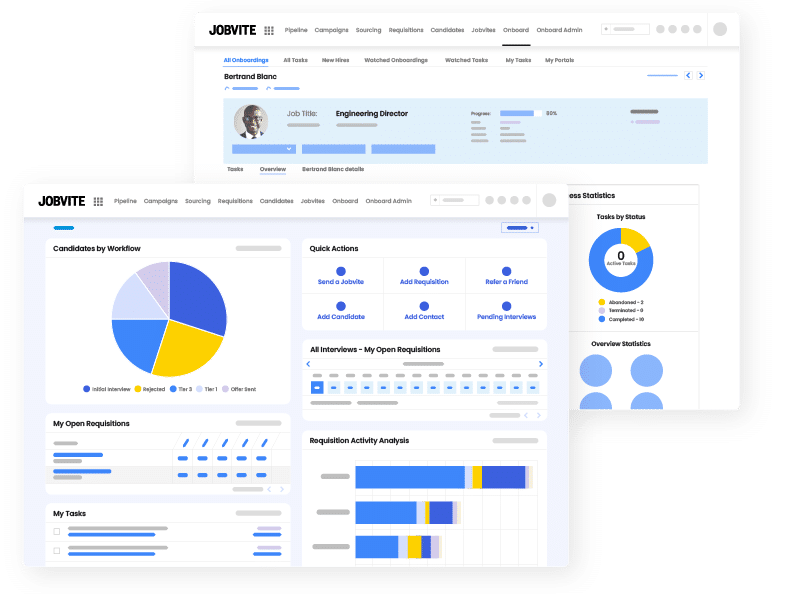
Unique Features:
- AI-powered candidate recommendations
- ATS tracking system
- Built-in recruitment marketing tools
- Excellent candidate experience management
Pros and Cons:
Pros | Cons |
Strong AI-driven sourcing | Expensive for smaller companies |
Excellent employer branding tools | Can feel overwhelming due to feature-rich interface |
Great for enterprise-level hiring | Requires training to utilize full capabilities |
According to Demandsage, around 87% of companies globally now use AI-powered tools in their recruitment processes. This has led to benefits such as reducing hiring costs by up to 30% per hire and significant savings in recruiter time.
4. JazzHR
JazzHR serves small and medium-sized business firms with low-cost and intuitive recruitment software. It’s makes core recruitment tasks easier. Plus, it allows for workflow customization, making it easier for growing businesses to tailor processes to their needs. With an easy interface, JazzHR makes recruitment accessible to teams without dedicated HR tech specialists.
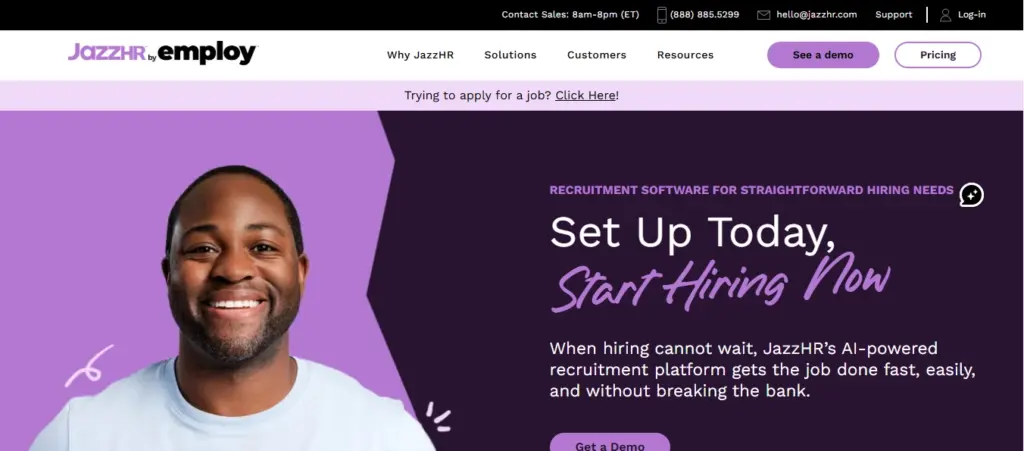
Unique Features:
- Customizable workflows
- Easy-to-use ATS system
- Candidate communication automation
- Affordable pricing
Pros and Cons:
Pros | Cons |
Budget-friendly solution | Limited analytics capabilities |
Easy implementation | Not ideal for enterprise hiring |
Good automation for SMBs | Fewer integrations compared to advanced tools |
5. BambooHR
BambooHR is well known for being easy to use and efficient at handling the employee lifecycle. Though its ATS is less feature-laden than specialized recruitment tools, it’s an ideal fit for organizations that wish for an integrated HR tool.
Its hiring module enables organizations to post job openings, handle applications, and automate onboarding after candidates are hired. It’s particularly favored by organizations seeking to consolidate HR functions without sacrificing efficiency in recruitment.
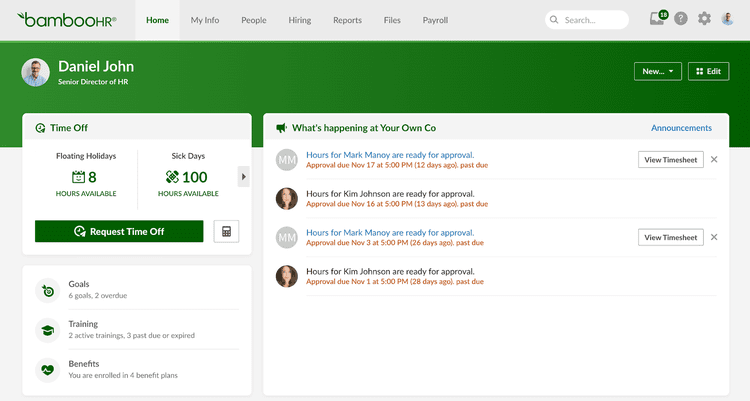
Unique Features:
- Applicant tracking system
- Centralized employee database
- Seamless onboarding workflows
- HR reporting and insights
Pros and Cons:
Pros | Cons |
Simple, clean interface | ATS features are not as advanced as specialized tools |
Combines HR and recruitment in one place | Limited customizations for hiring workflows |
Great customer support | Not ideal for high-volume recruitment needs |
6. Zoho Recruit
Zoho Recruit is an adaptable product serving both corporate HR departments and staffing firms. This supports ATS features, resume parsing, automated job advertising, and AI-based ranking of candidates.
It has one of the best advantages of integration within the overall Zoho ecosystem, thus is a favorite among companies utilizing Zoho products. It also has recruitment process outsourcing (RPO) support, which helps businesses ramp up hiring rapidly.
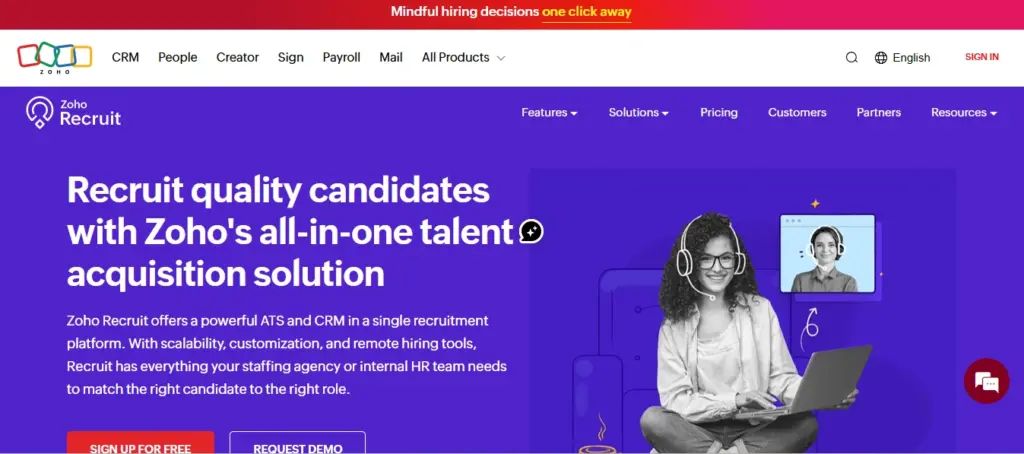
Unique Features:
- End-to-end ATS system
- Candidate sourcing and resume parsing
- AI-powered candidate ranking
- Customizable hiring workflows
Pros and Cons:
Pros | Cons |
Cost-effective with flexible plans | User interface could be more modern |
Easy integrations within the Zoho ecosystem | Some features locked behind higher-tier plans |
Great for both staffing agencies and in-house HR teams | Lacks advanced employer branding tools |
7. Bullhorn
Bullhorn is a top cloud-based applicant tracking system (ATS) and CRM platform for staffing and recruitment agencies. It provides sophisticated recruitment processing outsourcing features through aiding businesses to streamline placement, candidate sourcing, and management of client relationships.
Through its automation, mobile recruiting, reporting, and job board integration capabilities, Bullhorn finds extensive use among high-volume recruitment agencies. Its easy-to-use nature and high scalability make it ideal both for small recruiting companies and large-scale enterprises.
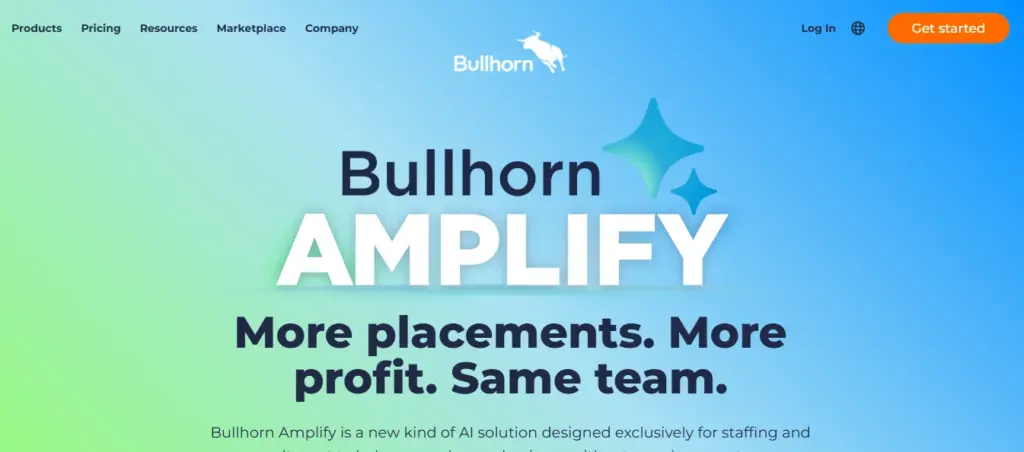
Unique Features:
- Advanced candidate relationship management
- Mobile-friendly ATS system
- Recruitment automation tools
- Powerful reporting and analytics
Pros and Cons:
Pros | Cons |
Excellent for staffing firms | Expensive for smaller companies |
Strong CRM functionality | Setup can be complex |
Reliable reporting tools | May require technical support for customization |
8. Recruitee
Recruitee is a team hiring platform designed to enable teams to make more informed hiring decisions. It concentrates on enhancing teamwork collaboration, employer branding, and offering a smooth candidate experience.
Recruitee also has a career site builder, enabling companies to make branded careers pages in order to recruit best talent. Its simple-to-use dashboards enable recruiters and managers to keep track of candidates’ progress.
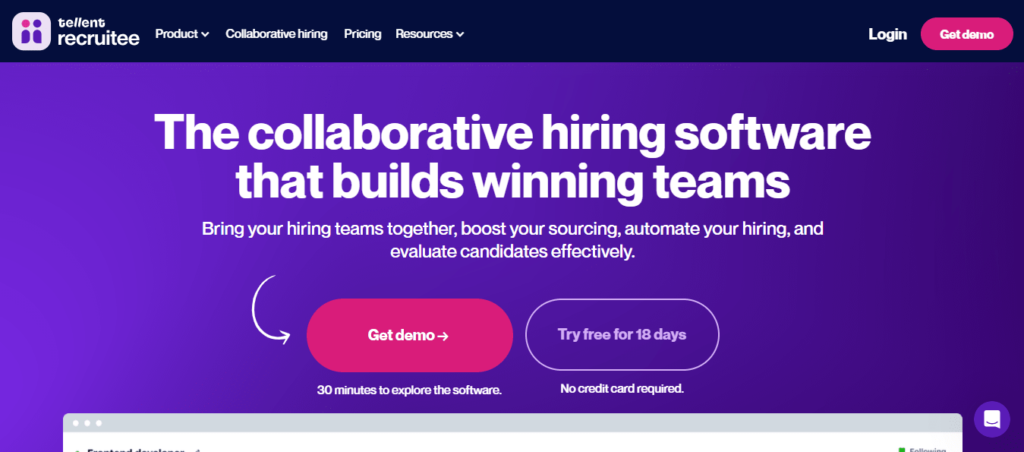
Unique Features:
- Simple-to-use ATS software
- Team collaboration Specifications
- Career site builder
- Data-driven recruitment insights
Pros and Cons:
Pros | Cons |
Strong team collaboration tools | Limited advanced analytics |
Great candidate experience features | Can become pricey as you scale |
Good for mid-sized companies | Fewer automation options than enterprise-grade tools |
According to Job Terix, demand for specialized roles in areas like AI, ML, cloud technologies, etc., is expected to increase by 30-35% in 2025. Also, employers are shifting toward skills-based hiring: for example, in the UK over the period 2018-2024, demand for AI roles rose by ~21% as a proportion of all job postings, while the requisites for formal university degrees in those roles declined by ~15%.
9. Comeet
Comeet provides a process-driven and team-based recruitment solution. It supports collaborative hiring, with tools to enable all the stakeholders in decision-making.
Its candidate pipelines and automated workflows make sure hiring teams are kept on track, and its interface simplifies things for recruitment.
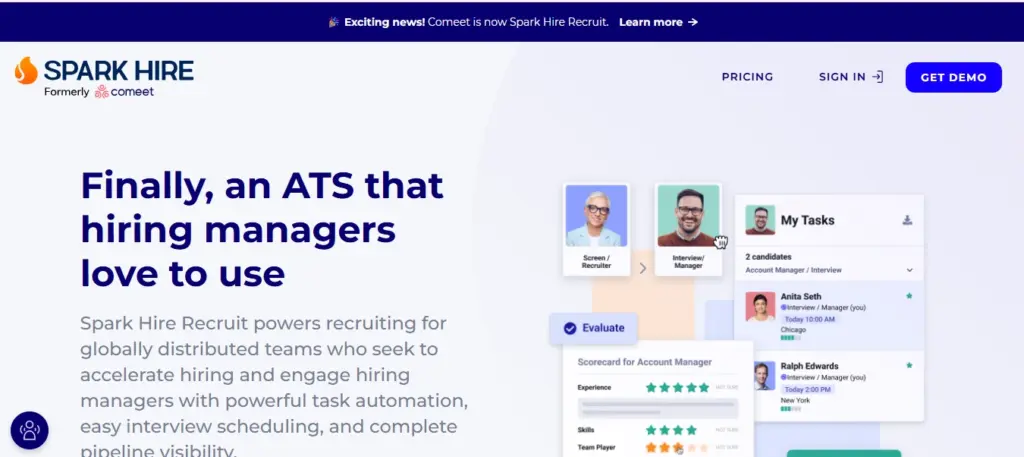
Unique Features:
- Automated workflows
- Collaborative decision-making tools
- Candidate pipelines
- ATS and candidate tracking system
Pros and Cons:
Pros | Cons |
Collaborative, team-focused hiring | Limited integrations with external tools |
Intuitive workflows | Best suited for SMBs rather than large enterprises |
Good automation features | Reporting tools could be more detailed |
10. Loxo
Loxo is a contemporary AI-driven recruitment platform dedicated to sourcing and outreach. It combines ATS capabilities with sophisticated recruiting automation and a robust candidate database. Recruiters can use AI to efficiently spot and match candidates to available jobs, and its multi-channel communication tools make outreach a breeze.
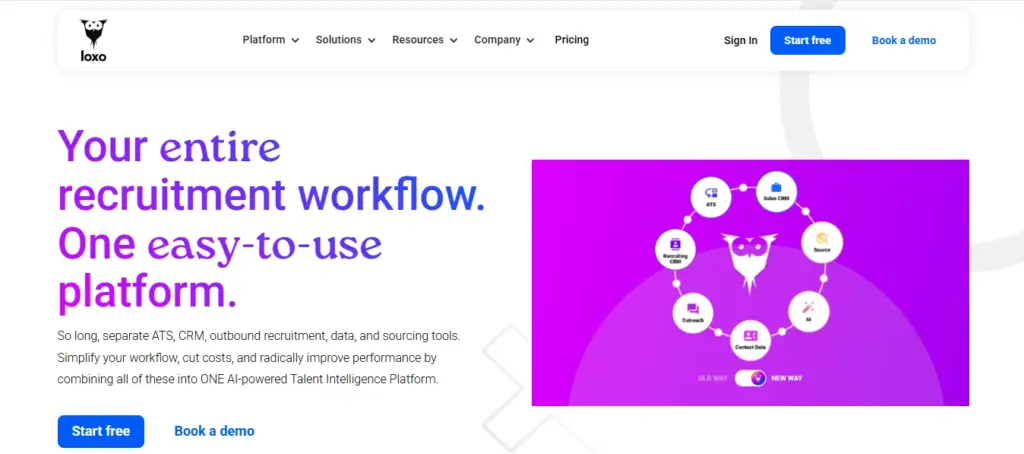
Unique Features:
- AI-powered recruiting automation
- Candidate tracking system
- ATS with smart matching
- Multi-channel communication tools
Pros and Cons:
Pros | Cons |
AI-driven sourcing saves time | Learning curve for AI features |
Excellent outreach tools | Not as customizable as some competitors |
Modern, intuitive design | Limited HR module integrations |
11. Pinpoint
Pinpoint is an applicant tracking system developed with a concentration on enhancing employer branding and minimizing cost per hire. It focuses on recruitment marketing in conjunction with ATS functionality, allowing companies to find high-quality candidates.
With powerful analytics, Pinpoint offers actionable insights into hiring performance and identifies areas for improvement. It can be easily integrated into other HR software, which makes it a good fit for contemporary HR teams
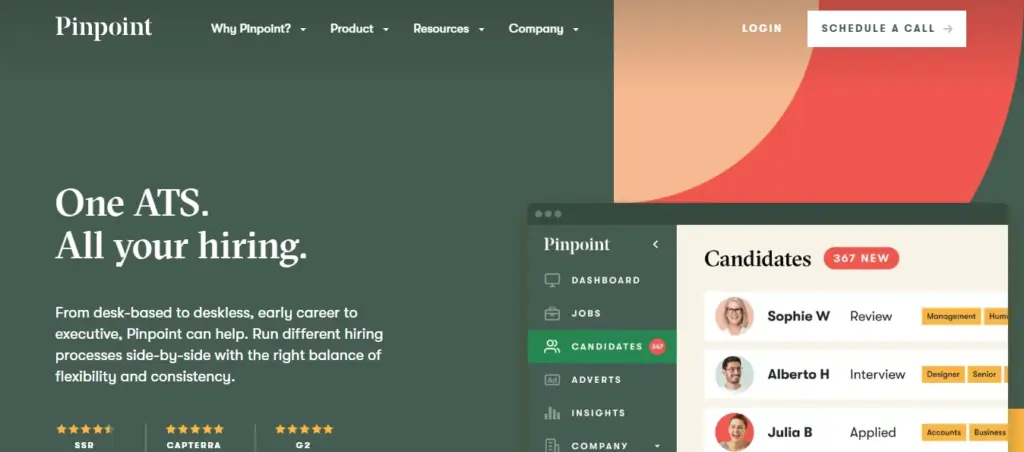
Unique Features:
- ATS and candidate tracking software
- Recruitment marketing Specifications
- Data analytics for hiring performance
- Easy integration with HR systems
Pros and Cons:
Pros | Cons |
Great employer branding tools | Pricing may not suit very small businesses |
Strong analytics | Fewer integrations compared to larger platforms |
Designed for reducing cost per hire | Not suitable for high-volume recruitment agencies |
Now, let us through a Simple Guide on How to Choose the Best Hiring Solution for your organization.
Simple Guide: How to Choose the Best Hiring Solution
Choosing the right hiring solution (or recruitment software) is a big decision for any company. The right one helps you attract talent faster, improve candidate experience, save recruiter time, and make data-driven hiring decisions.
The wrong one wastes time, misses good candidates, and creates confusion in your hiring process.
Here’s a simple step-by-step guide to help you make the best choice.
Step 1: Get ready and form a team
- Decide why you need a hiring solution (resume screening, job posting, interview scheduling, offer management, etc.).
- Form a small team: HR, hiring managers, recruiters, and one IT or admin person.
- Write down your goals in one page.
Output: clear goals + list of people in charge.
Step 2: Review your current hiring process
- Map how you hire today: where you post jobs, how resumes come in, how interviews are scheduled, how offers are made.
- Note problems like slow hiring, manual tracking, missed candidates, or poor communication.
- Write down how much time is spent per hire.
Output: list of pain points and what you want to improve.
Step 3: Make a must-have vs nice-to-have list
Must-haves:
Job posting on multiple platforms
Resume parsing and candidate database
Interview scheduling and feedback tracking
Analytics and reports
Automation and data security
Nice-to-haves:
AI-based candidate matching
Video interviews
Career page builder
Employee referral management
Integration with HRMS or background check tools
Output: a clear requirements list.
Step 4: Fix your budget
- Check all costs: license per recruiter/month, job board integrations, implementation, and training.
- Plan for at least 3 years to estimate total cost of ownership.
Output: 3-year budget plan.
Step 5: Shortlist vendors
- Start with 8–10 vendors, then narrow down to 3–6 that fit your needs and budget.
- Look for vendors with experience in your industry and company size.
- Ask for case studies or references.
Output: a final list of vendors to explore deeply.
Step 6: Prepare demo questions
Don’t let vendors run generic demos. Ask them to show how their system fits your hiring process.
Examples:
Post a job on multiple job boards.
Parse 200 resumes and shortlist candidates automatically.
Schedule interviews with email/calendar integration.
Collect feedback from multiple interviewers.
Generate a hiring report.
Output: a demo script to test each vendor fairly.
Step 7: Run demos and score them
- Use a scorecard: rate 1–5 on features like automation, ease of use, reporting, speed, integration, and support.
- Compare all vendors using the same rating scale.
Output: clear scores, less bias.
Step 8: Check references and test with real data
- Talk to real customers about their hiring volume, support experience, and setup time.
- If possible, run a pilot for one or two job openings.
- See how easy it is to post jobs, review applicants, and generate reports.
Output: proof the solution works in real hiring situations.
Step 9: Negotiate the deal
- Ask for clear pricing and renewal terms for 3 years.
- Make sure your candidate data is secure and exportable anytime.
- Check service-level agreements (SLA) for uptime, support, and updates.
Ensure training and onboarding are included.
Output: a safe, transparent contract.
Step 10: Plan rollout and training
- Create a timeline: setup → test → train → go-live.
- Train recruiters, HR managers, and interviewers with simple guides.
- Roll out in phases (pilot → department-wise → full company).
Output: a smooth rollout without confusion.
How to measure success after launch?
Time to fill a position (should drop).
Quality of hire (should improve).
Recruiter hours saved.
Candidate satisfaction score.
Offer acceptance rate.
Hiring funnel visibility and reporting speed.
Tips & Pitfalls
- Always check references.
- Keep workflows simple.
- Train your hiring team properly.
- Don’t choose based only on looks or marketing.
- Watch for hidden costs like training or integrations.
Final check before signing
- Must-haves all covered?
- Budget fits for 3 years?
- Pilot results are good?
- References are positive?
- Contract is clear and data is secure?
If yes → Go ahead and sign.
Conclusion
So, we need to understand that hiring processes are evolving, getting smarter. And businesses that rely on outdated methods risk themselves falling behind in securing top talents. Irrespective of whether you’re a small business or an enterprise, adopting modern hiring solutions such as ATS tracking systems and best recruiting software will power your recruitment process. Thus, giving you a competitive edge.
Frequently Asked Questions (FAQs)
How to streamline the recruitment process?
Use an ATS and automation tools to speed up resume screening, interview scheduling, and candidate communication.
What are the three C's of recruitment?
Competence, Compatibility, and Commitment—key factors to hiring the right talent.
Which HR software is best?
Zimyo is one of the best HR software for businesses, offering ATS, payroll, performance, and engagement tools in one platform.
What is the biggest HR challenge in recruitment
The biggest challenge is finding and retaining top talent, which hiring platforms help solve with automation and analytics.

